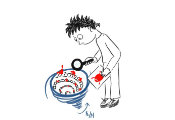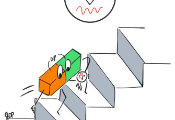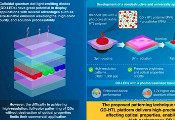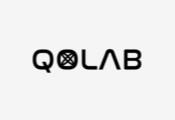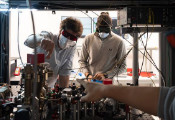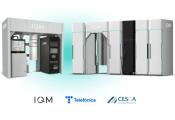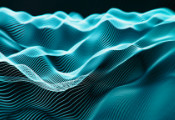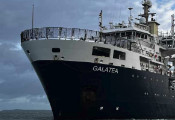NRL Introduces a New Paradigm for Control of Quantum Emitters
WASHINGTON , Oct. 31, 2024 – A U.S. Naval Research Laboratory (NRL) multi-disciplinary team developed a new paradigm for the control of quantum emitters, providing a new method for modulating and encoding quantum photonic information on a single photon light stream.
Quantum photonics is expected to offer functionality not possible with classical light and promises significant advances in secure communications, metrology, sensing and quantum information processing and computation.
These applications impose many requirements on quantum emitter (QE) candidates, including deterministic creation and placement of the emitter, a high degree of single photon purity ranging from 90-100%, and a mechanism to control or modulate such emission. The ability to modulate the character of the light emitted from these discrete emitters offers a mechanism for encoding information on a single photon stream, with applications in secure communications and quantum encryption schemes based upon single photon sources. This work was recently published in ACS Nano 18, 25349-25358 (2024).
Quantum photonics is a science and technology that uses quantum optics for certain applications where quantum effects play an essential role. It involves generating, manipulating and detecting light in regimes where it is possible to coherently control individual quanta of the light field. QEs, also known as single photon emitters, are key components in this technology.
“Two dimensional materials such as monolayer tungsten disulfide and tungsten diselenide serve as hosts for QEs, and their planar, atomic layered structure offers many advantages as material platforms for quantum photonic circuits,” said Berend Jonker, Ph.D., NRL senior scientist and principal investigator. “They can be readily integrated with other materials and substrates, and the proximity of the QE to the surface facilitates both extraction of the light as well as control of the emission by external effects.”
The NRL team developed a nonvolatile and reversible procedure to control single photon emission purity in monolayer tungsten disulfide (WS2) by integrating it with a ferroelectric material. They create an emitter in the WS2 and are able to toggle the emission between high purity quantum light and semi-classical light by switching the ferroelectric polarization with a bias voltage. Localized emitters in the monolayer WS2 over “up-domains” in the ferroelectric film emit high purity quantum light, while those over “down-domains” emit semi-classical light.
“This novel heterostructure introduces a new paradigm for control of quantum emitters by combining the nonvolatile ferroic properties of a ferroelectric with the radiative properties of the zero-dimensional atomic scale emitters embedded in the two-dimensional WS2 semiconductor monolayer,” Jonker said.
The samples studied consist of monolayer films of WS2 grown by chemical vapor deposition and mechanically transferred onto a 260-nanometer film of an organic ferroelectric polymer, which had been previously transferred onto a highly doped silicon substrate. The scientists deterministically create and place quantum emitters within the WS2 using the atomic force microscope (AFM) nanoindentation technique developed and patented by NRL.
“Achieving intimate contact between WS2 and the ferroelectric film is crucial, and requires an ultra-smooth ferroelectric film surface,” said Sungioon Lee, Ph.D., an American Society for Engineering Education (ASEE) postdoctoral fellow working with Jonker. “Therefore, a spin-coating and flip-over process was used for the film.”
“The organic ferroelectric polymer serves as a deformable polymer,” said Ben Chuang, Ph.D.
research physicist with NRL Materials Science and Technology Division. “When the AFM tip is removed, the WS2 conforms to the contour of the nanoindent, and the local strain field activates single photon emission from atomic scale defect states in the WS2.”
For the top electrical contact, graphite was then transferred and partially covered the WS2, and a conductive piezo force microscopy tip was used to apply a bias voltage to switch the polarization of the ferroelectric polymer beneath the WS2.
Quantum emitters are fundamental building blocks in the materials science and quantum science technologies expected to maintain and enhance warfighter dominance for the future Navy. The Naval Science and Technology (S&T) Strategy asserts “quantum science will play a crucial role in naval warfare by enabling breakthrough technologies such as faster computation speeds, … robust encryption and innovative sensors.” The Office of the Undersecretary of Defense (Research & Engineering) and the National Defense S&T Strategy 2023 have both identified advanced materials and quantum science as critical technology areas.
The NRL research team consisted of Sungjoon Lee, Ph.D., a postdoctoral fellow; Hsun-jen Chuang, Ph.D., research physicist; Kathy McCreary, Ph.D., research physicist; Dante O’Hara, Ph.D., materials engineer; Berend Jonker, Ph.D., senior scientist; all of the NRL Materials S&T Division; and Andrew Yeats, Ph.D., research physicist with NRL Electronic S&T Division.

